25 American Customs That Baffle Europeans (USA Culture Shock!)

This site contains affiliate links, which means that we may earn a small commission, at no cost to you, for qualifying purchases. It supports the work that goes into keeping this content free. Thanks for reading! More info: Privacy Policy.
In the last few years, we’ve visited the USA quite a few times – from NYC to Alaska, and many places in between. On each of these trips, we kept noticing little things that feel completely normal in the U.S. but are very different from what we’re used to in Europe.
This gave me an idea for this article – American habits and everyday quirks that leave Europeans scratching their heads.
From strange breakfast choices to oversized portions, tipping, hidden taxes, giant flags, and endless small talk, this list highlights some of the many things that might surprise Europeans visiting the U.S.
Disclaimer: This article is not meant to judge anyone or to say that the European or American way of doing things is superior or inferior in any way. It simply shows how something that is so normal and unquestionable in one culture can be really strange to someone from the other side of the Atlantic.
Oh, and if something I say sounds like a rant, well, I’m sure there are plenty of things in Europe that Americans could rant about as well ;). That’s also why we love to travel – it opens your eyes to different cultures!

So here are – in random order – some of the things that are perfectly normal in the USA but strange to Europeans:
1. Americans like it BIG
The moment you set foot in the USA, you realize that everything here is big.
From huge cars, spacious parking lots, gigantic department stores, and enormous shopping malls to very generous food portions and oversized drink cups – everything in the States is so much bigger than in Europe.
You should see the face of a kid who orders some Coke (yes, Pepsi is fine!) and gets an American-sized drink for the first time… Oh, and you can get free refills too!

2. Taxes are not included in the price
In Europe, the price you see is the price you pay, including all taxes. Not so in America, where sales taxes are added at checkout.
So in the USA you never know exactly how much things will cost you until you actually have to pay. Good luck with the math if you are trying to spend your last cash at the airport before going home!
Oh, and talking about the final price you pay, there is one more surprise for Europeans – see below.

3. Tips are expected everywhere
American tipping culture is something that can give real headaches to foreigners visiting the USA for the first time. You are expected to tip everyone who provides you a service – from waiters and bartenders to cleaning staff at hotels, taxi drivers, and even hairdressers.
To tip or not to tip isn’t even a question. But how much do you tip?
On all our recent trips to the U.S., we paid for almost everything by credit card. And every single time, we were presented with a tipping screen. In most cases, it wasn’t really an option – you could only choose which percentage to add.
Sometimes it started at 15–18%, usually 20–25%, and often went up to 30%. Some places calculate the tip on the subtotal, but more and more seem to expect at least 20% on the total amount. And then there was a wine bar that suggested a 40% tip. Forty percent on top of an $18 glass of wine (+ tax) came to $27.47… for a glass of Portuguese wine. The funny part? The same wine costs about €4.50 for the whole bottle in Portugal (yes, I checked!).
Oh, and there were situations where we used a self-scan machine and were presented with an option to add a tip. For what?!
Many Americans tell me they normally tip 15% of the pre-tax amount, but I honestly don’t know how they approach it because you constantly feel pressured into tipping twice as much.

4. Ordering coffee should come with instructions
If you are a European trying to order a cup of coffee in the USA, you may start to wonder if they teach it as a separate class in American schools.
Asking for a regular coffee could work in a traditional diner. But at a coffee shop, it will just get you a frown and an irritated look.
First, you need to choose the size, with the smallest one being about five times larger than anything you find in Europe. Then comes the choice between a single or a double, regular or decaf, with milk, or maybe a latte or a cappuccino. And don’t get me started on all the different types of milk – from regular to skimmed, but also almond, coconut, soy, oat, and even cashew or rice milk…
By now, you might think you passed the test and will actually get your coffee. Wrong! There are more choices to be made!
Would you like to add some flavor, or maybe two? You are then presented with countless options, starting with vanilla or caramel to more sophisticated flavors you have never even heard of… Visiting in the fall? Why not try a pumpkin spice latte… Whatever you choose, just don’t take too long to decide – ain’t nobody got time for that!
And when you think you can’t personalize your coffee any further, they will ask you if you want it hot or iced. Oh, and do you want to drink it here or to go?

5. Single-use plastic, throw-away dishes & no recycling bins
This is probably one of the biggest culture shocks to Europeans in the USA nowadays – single-use products are as popular as ever. Plus, it’s almost impossible to find recycling bins for glass, plastic, or organic trash. At most places, all the waste goes into one big trash can.
From paper plates and cups to plastic cutlery and sippy bags (yes, that’s a thing) – everything seems to be made to use once and throw away. There is even a movement towards using paper plates to ‘reduce stress’ of doing the dishes…
It’s not just something people do at home. It’s quite common to get your food served on a plastic plate in casual American eateries. Most hotels also use throw-away dishes for breakfast.
And if you go to a supermarket, you will likely have a bagger* package your groceries for you using a ridiculous number of plastic bags. Often, they will also place just one item in two plastic bags (yes, that is possible!)…
* For Europeans unfamiliar with the term ‘bagger,’ it refers to a person who packages your groceries for you after they are scanned at the checkout counter.
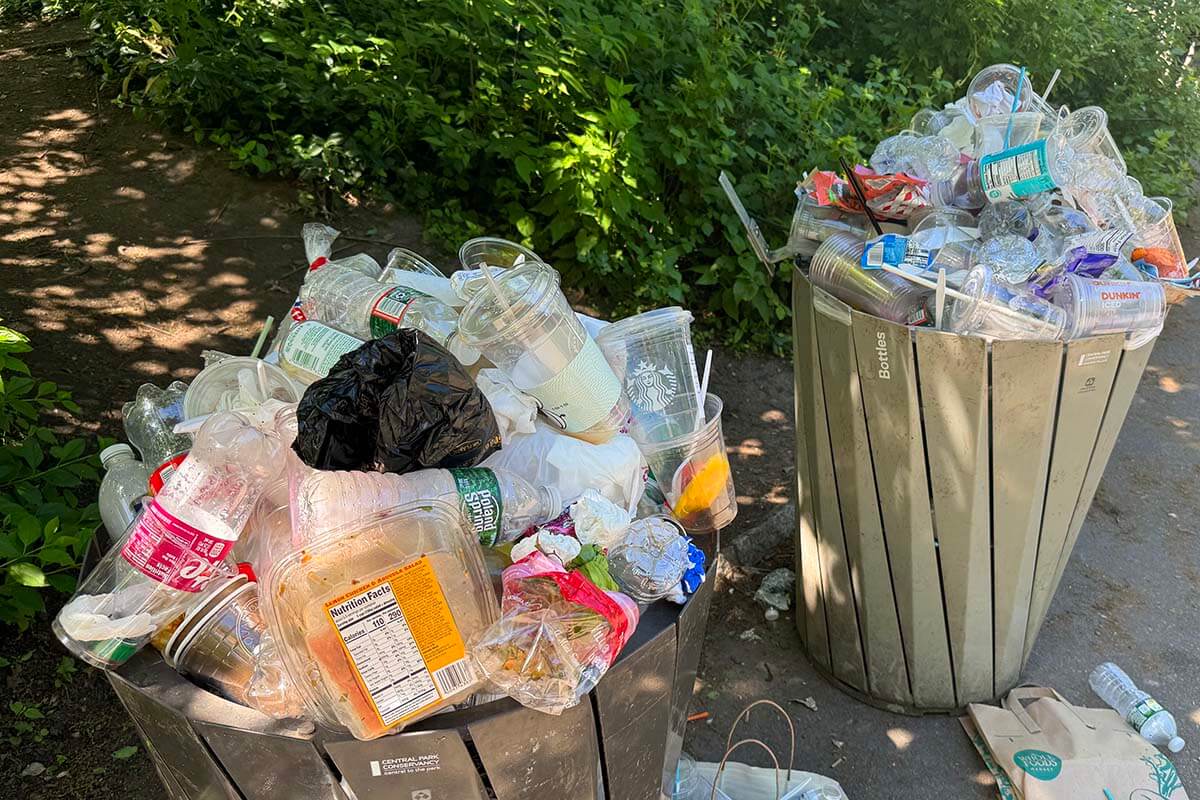
6. Lots of staff everywhere
American businesses have so much staff. Often, for the simplest tasks like showing you the way to a lift or a staircase… Next time you visit any institution or tourist attraction, pay attention to how many people work there.
In most establishments, there is at least one person at every corner of the building and every space – sometimes, before you even enter.
But the strangest thing is that most of these people seem to have a very specific task and if you ask them anything else, they will just direct you to the next person.

7. All drinks come with ice
Talk to any American and they will tell you that they can’t live without their ice. Ice? Yes, you know, frozen water, ice cubes, ice.
In America, you can buy huge bags of ice at supermarkets and petrol stations. Every self-respecting hotel has ice makers on every single floor. If you ever wondered why there is a little empty bucket with a plastic bag in every hotel room, now you know.
It took me a while to get used to this, but unless you specifically ask for ‘no ice’, all your drinks will be served with ice in the United States. Oh, and it’s not just a bit of ice – a glass is usually filled with ice to the brim leaving you wondering where they will pour the actual drink…
Recently, we were even asked if we wanted ice in our wine. Red wine for that matter! Why?!

8. Flags at every turn
If there’s one thing Americans are proud of, it’s their flag. And they’re not shy about showing it!
You’ll see flags on houses, front porches, cars, schools, shops, gas stations, boats, construction sites… and yes, sometimes even on clothing, swimsuits, or food.
Some of these flags are huge. The kind you can spot from half a mile away and assume must belong to NASA Headquarters or the Pentagon, only to get closer and realize it’s a local car dealership or a random tiny business showing its patriotic side.

9. Religion is all around you
One thing that surprises many Europeans is how visible religion is in everyday American life. You’ll see people preaching in parks, on street corners, in the subway… pretty much anywhere there are more than three people standing still (or even when absolutely no one is listening).
Turn on the radio while driving, and you’ll often land on several Christian stations before you find some music. Most hotels, including small roadside motels, keep a Bible in the nightstand drawer as well.
What also puzzles me is how you can drive through a tiny village with one gas station and a small grocery store, yet somehow there are three or four different churches and they are all busy on a Sunday morning. And if you ever switch on American TV, you might even catch a preacher with the charisma of a talk-show host, delivering sermons with the same energy you’d expect from a prime-time celebrity.

10. Americans drink lots of water
Many Americans drink liters – no, gallons – of water every day.
You will see huge water bottles standing on people’s desks and many people carry sippy cups everywhere they go. It’s also not unusual to see people walking around the city with camel backpacks sipping water as they go.
The moment you sit down at a table at a restaurant they will come with a pitcher of iced water and start serving it. After all, you don’t want to risk getting dehydrated while looking at the menu!
I always wonder how Americans survive a trip to Europe where you have to ask for water and 10 minutes later get presented a tiny little bottle with 5 oz of water (which – on top of it – often costs more than wine or beer).
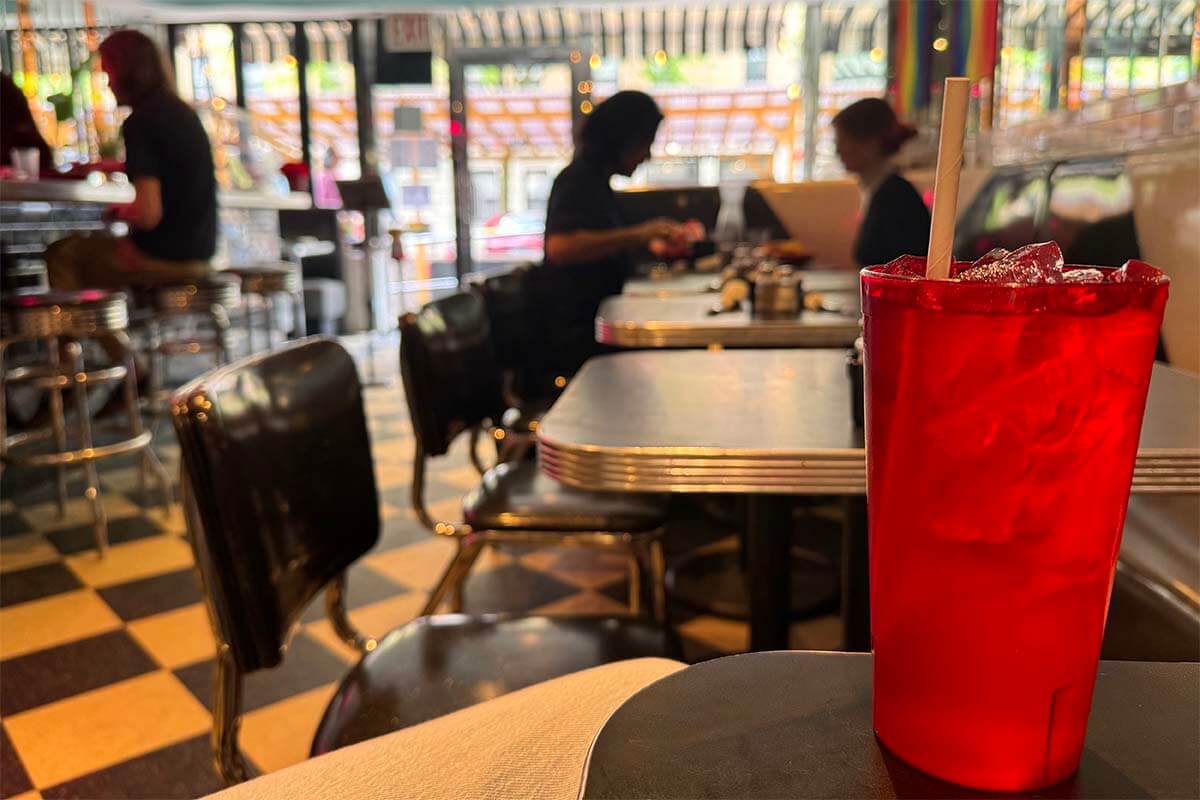
11. Air-conditioning is always on
If there is one thing Americans love as much as their ice, it’s air conditioning. Every car, every building, and every room is air-conditioned. And not just a little bit. Even if it’s just 68°F (20°C) outside, air conditioning is on everywhere.
Hotel rooms are often cooled to 64°F (18°C), and then they give you some extra blankets. Why?!
At least in the hotels, you can switch it off or change the temperature, but also restaurants, museums, shops, buses, and public institutions are freezing cold… At the risk of repeating myself – why?!
TIP: If you are a European visiting the USA in the spring or summer, be sure to always carry a light scarf or a sweater with you for indoors!

12. Dinner starts early and doesn’t take long
Most restaurants in the USA open for dinner from about 5.30 PM and close around 10 PM. So if you are coming from Southern Europe and just start to think about food around 8.30 PM, you will have to be quick to order before the kitchen closes.
While in Europe most upscale restaurants reserve your table for the entire evening, in the USA it’s common for restaurants to have at least two seatings per night. At fancier establishments, your table is typically reserved for about 1.5 hours, or up to 2 hours if you’re with a larger group. After that time, the restaurant will likely need the table for the next seating.
On the other hand, the entire dining experience in the US goes so much faster than in Europe. So 1-1.5 hours is usually more than enough time. The time it takes you to get your drinks and order food in Europe, you can easily have a two-course meal in the USA. No kidding.
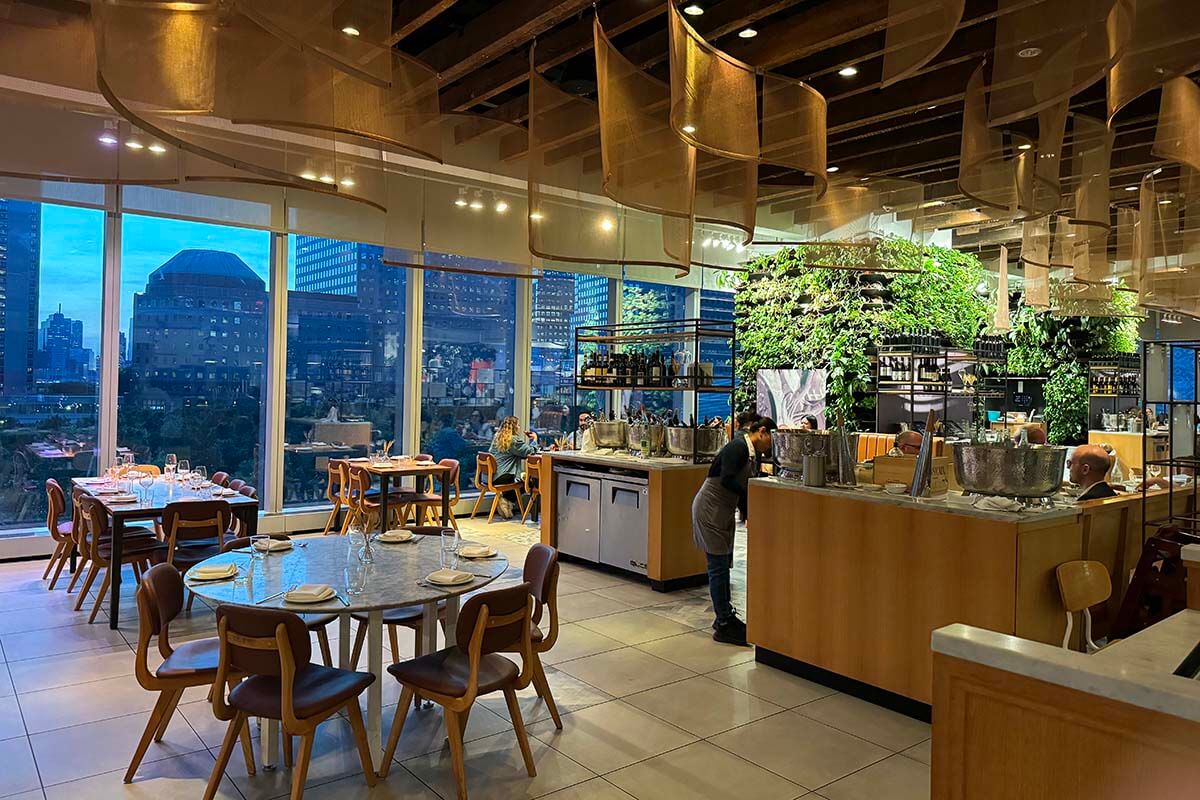
13. Drive-through everything
Europeans know drive-through fast food, but the U.S. has taken the concept to a whole new level.
There are drive-through pharmacies, drive-through coffee and donut shops, drive-through ATMs, and even drive-through wedding chapels. On our recent Northern California road trip, we even saw a few drive-through trees, and most people didn’t get out of the car to take a picture – just drove through and went on…
It always amazes me how many things in America you can do without ever stepping out of your car.

14. Doing laundry goes really fast
If you ever have to use a washing machine or a drier in the United States, you won’t believe how quickly it goes. Most washing machines will get your clothes clean in 30-40 minutes, while a drying cycle can be done in 15-45 minutes.
For comparison, a normal washing or drying cycle in Europe takes 2-3 hours.
So if you are traveling in the USA and decide to use public laundromats, don’t walk away for too long or someone else will take your laundry out for you…

15. Car is king
More than 9 out of 10 Americans have a car and they use it for everything, even the smallest distances. It’s not abnormal to see someone taking a car to drive from one side of a parking lot to another…
Public transportation is very good in some major cities but practically non-existent in rural areas. However, even if available, public transport is not nearly as popular and widely used as in Europe and people still prefer to take a car.
Railway connections are also rather limited. So for somewhat longer distances, people usually take a plane.

16. Teenagers are allowed to drive
Americans can drive a car from a very young age. In most states, you can get a driver’s license from the age of 16, but there are also many places where it’s just 14-15 years.
I have to add that there are often some restrictions such as when or with whom they are allowed to drive.
But by the time Europeans just start to think about learning to drive a car, an average American already has a full driver’s license.

17. Young adults aren’t allowed to drink
The minimum legal drinking age in the United States of America is 21. If you are younger than that, you may not even be able to enter some bars, let alone get a drink.
This might come as a shock to young Europeans who may not realize that some bars will be completely off-limits to them in the USA.
This is a complete culture shock if you come from a country like Belgium, where we are allowed to drink light alcoholic drinks from the age of 16 (see here for more crazy facts about Belgium)…

18. Public toilets aren’t very private
Public toilets in the United States are usually built in such a way that they give little privacy.
From wide gaps between doors and frames to partitions that don’t reach floors or ceilings – you can easily see if there is someone inside (and often more than that). If you are really tall, you can sometimes even look over the partitions and say hi to your neighbor…
As a European visiting a public bathroom in the USA for the first time, you might be wondering in disbelief what’s the reasoning behind this peculiar design. Apparently, it’s mostly for practical reasons such as easier cleaning and maintenance, but they also find that it’s safer this way…
Talking about safety, there is one more thing that is hard to understand for us, Europeans – see below.

19. Carrying a gun is considered perfectly normal
Many Americans own one or more guns, and it is quite common for them to carry these firearms as part of their daily routine.
When asked about it, they will tell you that ‘bad guys’ have guns too. So it’s only normal for the good guys to be able to defend themselves.
I still remember the first time we met someone with a gun in the USA. We were visiting a remote ghost town near Aspen, CO, and we saw a man carrying a gun. He was just a tourist, as we were, and we later saw that his family was with him, but just seeing someone with a gun in a remote area gave us shivers.
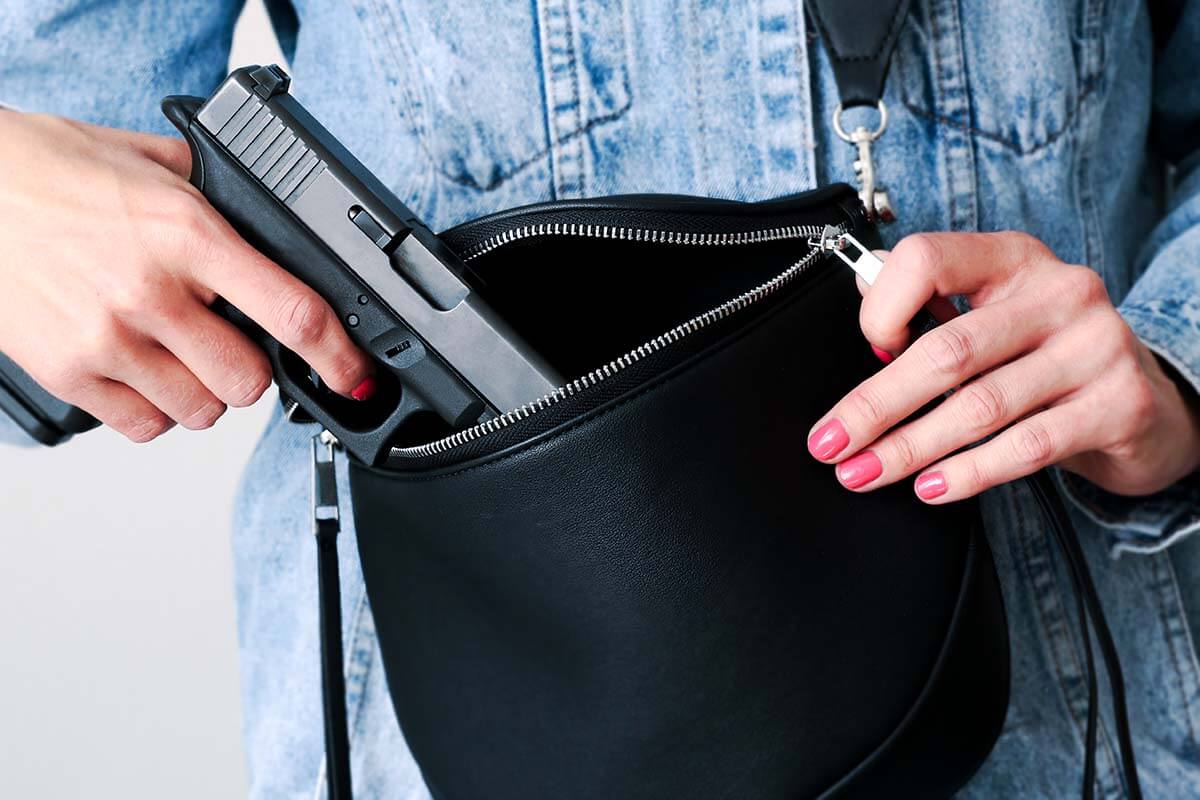
20. America loves lawsuits
Legal culture in the U.S. can be quite an experience for Europeans. From the injury lawyer ads on billboards, buses, and radio stations, often delivered with dramatic slogans and the classic “no win, no fee” promise, to the strangest stories of people suing companies over the most unexpected things…
And because of that, almost everything in the U.S. comes with a disclosure or warning label, just in case.
Our kids still can’t get used to the sheer number of injury lawyer ads every time we visit the USA. It’s as if every American road trip comes with its own legal soundtrack and a reminder that someone, somewhere, is always ready to take a case.

21. Breakfast is ultra sweet
Talking about American things that are really strange to Europeans, I also have to mention a typical American breakfast. To make things even more confusing, it features a selection of European-sounding foods that no European would ever think to eat for breakfast…
Pancakes, French toast, Belgian waffles, muffins, bagels, Danish pastry… these are just a few things you will typically find served for breakfast at an average hotel in the United States.
There is hardly any cheese or charcuterie, let alone fresh fruit. If you can find any yogurt, it’s usually sweetened. And good luck with bread… At best, you will get some dry toast or sweet bread that tastes more like cake. To make up for it, they usually also have eggs and bacon and sometimes hashbrowns (potatoes).
Oh, and how cool are American pancake makers?! Just be prepared to loosen your belts after a few of these breakfasts…

22. White socks with non-sporty outfits
This is one more thing that Europeans find strange in the United States – people wearing white socks with regular clothes and non-sporty shoes or even business outfits.
I read somewhere that in America white socks are considered classic and clean.
It’s quite common to see someone in a business suit and white socks. Although, I have to say that – at least in some places in the USA – you see it much less nowadays than in the past.

23. Doggie bags
The concept of a doggie bag is another American invention that most Europeans aren’t even familiar with.
Let me explain. A doggie bag is a bag or a little box that is used to take food leftovers from a restaurant. As already mentioned, food portions in America are usually so big that it’s practically impossible to finish everything. So people use doggie bags to take the rest of the food home. For later. Or to give to their dogs.
However… I once lived with an American family for a few weeks and they used to bring doggie bags home all the time. They would put them in the fridge and then throw everything away a few days later. Not once did I see them eat any of it or give it to their dog…

24. Friendly small talk & super-enthusiastic service
Americans are incredibly friendly and chatty, often far more than Europeans expect. A simple “How are you?” is usually just a polite greeting, but if you answer with anything more than “Good, thanks,” you might suddenly find yourself in a full conversation.
The same goes for restaurants. Servers are upbeat, attentive, and check on you so often that chatting with them becomes part of the meal. Many want to know where you’re from and what you’re doing in town. And it works both ways – when I waited tables in the U.S. during my student years, people constantly asked about my background and happily shared their own family stories when they discovered their great-grandparents came from Europe.
And then there’s the everyday small talk: strangers who tell you about their day, ask about yours, or casually bring up politics while you’re just trying to buy a sandwich.
For Europeans, who usually need a bit of warm-up time before talking to strangers, this can be charming… or a little overwhelming. The funny thing is that after a while, you might catch yourself doing it too – much to the absolute embarrassment of your European teenagers.

25. Just 10 days of paid vacation
Did you know that an average employee in the United States of America is entitled to just 10 days of paid holiday leave per year?
This is something that is absolutely impossible for an average European to comprehend.
Tell me, our dear American readers, how do you manage to survive – let alone travel – with so few paid vacation days?!
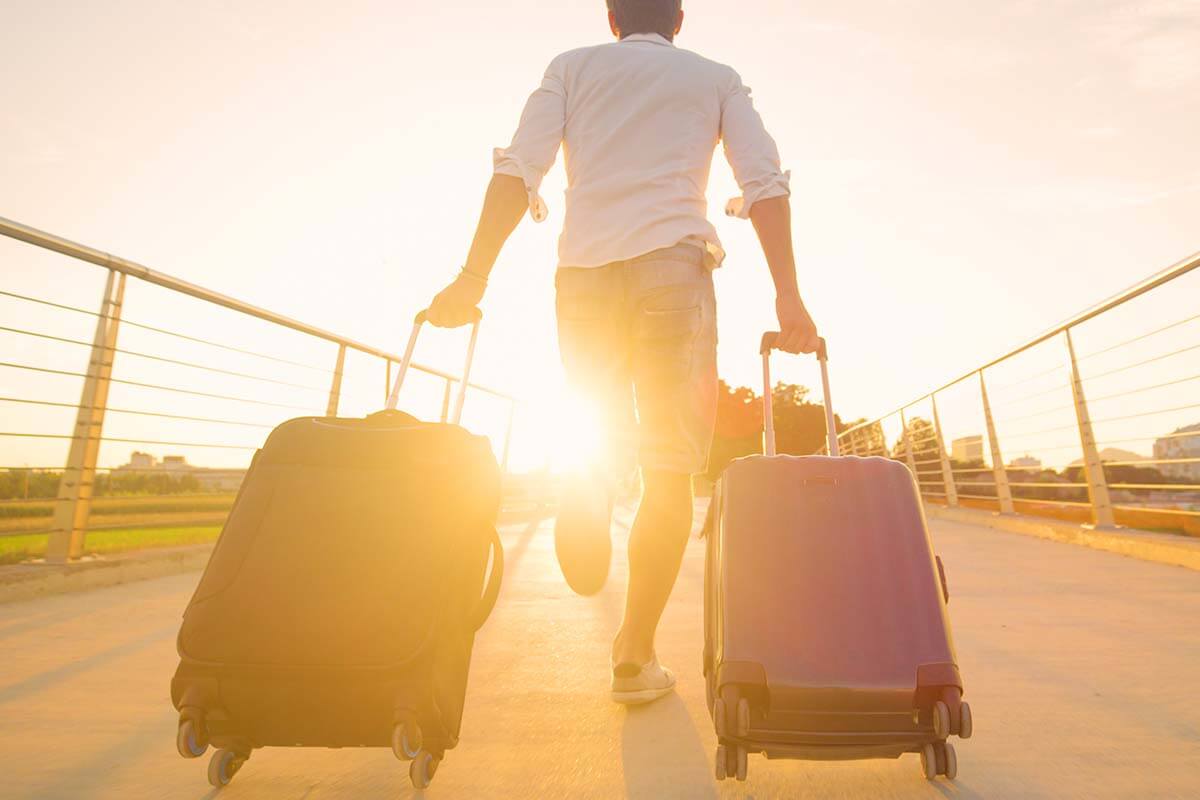
If you enjoy reading this article, don’t forget to bookmark it and share it with your friends. Are you on Pinterest? Pin this image!

USA TRAVEL INSPIRATION:
- 25 American Customs That Baffle Europeans (USA Culture Shock!)
- New York City with Teenagers: 16+ Fun & Teen-Approved Things to Do
- New York in Late October – Early November: What to Expect, Weather & Tips
- Lake Tahoe in One Day: Itinerary with Best Things to Do (+Map)
- 9 Best Things to Do in Lassen Volcanic National Park (+Map & Tips)
- 13+ Absolute Best Things to Do in Crater Lake National Park (+Map & Tips)
- Best Way to Hike The Four Mile Trail in Yosemite (+Map & Practical Tips)
- Taft Point Trail – The Most Rewarding Easy Hike in Yosemite National Park
- One Day in Monterey: Detailed Itinerary with Top Things to Do
- 5 Absolute Best Day Trips from San Francisco (+How to Visit & Tours)
- 2 Days in San Francisco: Detailed Itinerary with Top Sights & Map
- Northern California Road Trip Itinerary (2-Week Loop from San Francisco)















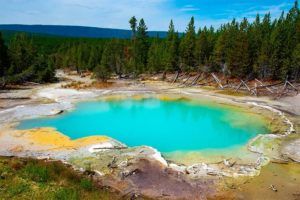


That was a fun read. I never thought about many of these differences until you pointed them out.
You are right about the tipping. Now, even the counter people in the take out restaurants expect a tip.
Yes, exactly! It’s the same all over the world — every country has its own little habits that seem totally normal to locals but so odd to visitors. I still can’t get used to the fact that we have to pay to use bathrooms in so many public places here in Belgium…
This article cracked me up! As an American traveling in Europe right now, I was making a list in my head the other way around. The thing that makes me most crazy in Europe is having to pay to use the bathroom all the time. I’ve never once paid for a bathroom in the US. And what if you really need a bathroom and you don’t have exact change. This can be a major issue! I also always think of being thirsty when I’m in Europe because there are very few public water fountains to refill a water bottle – maybe as you say Americans drink more water. But aren’t you thirsty?? These are just the top two things on my list. Don’t get me wrong- I love traveling in Europe! And I wish we recycled more, used less AC and I definitely wish we carried fewer guns.
Hi Leslie, yes, having to pay for bathrooms annoys me too. Especially if you are already a customer somewhere. In some places, you can even pay by card so having no cash isn’t even an issue, but yes, I know exactly what you mean.
As for water, most people in Europe just drink tap water, but you won’t often see people walking around with water bottles unless they are hiking or doing some strenuous physical activities, or if it’s extremely warm. There are some places where water fountains are quite common (like Italian cities, for example), but indeed, it’s not something you will find all over Europe. And if you order water at the restaurant, in most cases, it’s bottled water that you have to pay for. So I guess most people reason that if you already have to pay for it, you can just as well take something else than water, especially in southern countries where a glass of wine is often cheaper ;).
Thanks for reading and enjoy the rest of your European adventure!
Such a great article! We just returned from a 13 day trip to the UK with 31 teenagers and 22 adults as part of a Youth Choir Tour and your comments were exactly what we’ve all been thinking the entire trip. As Texans the lack of ice in drinks was a big deal. We are at 100 degree F/38 degree C almost every day in the summer and so ice drinks and air-conditioning are “second nature” to us. Loved the cool temps in the UK – didn’t complain about the lack of AC there. And of course, yes, everything is bigger in Texas (as well as the rest of the US) so tiny sinks and roads were an adjustment. And the washing machine/dryer cycle time was a huge shock! We couldn’t believe it takes so long!
Other things we found odd about the UK – no standardization of light switches, door locks or toilets. Figuring out how they worked everywhere we went was a chore. And the need to turn on the wall plugs – how many times did a phone not charge because someone forgot to flip the switch!
Ha ha, it seems like you had a proper culture shock, Angela. And this is just one – English speaking – country. Just imagine traveling through multiple European countries where everything, including the language, is different. 😉
Happy travels!
Ok, I’m guilty of a few of these things! I currently live in NJ, but am originally from NYC. I just ordered a camel back for hiking and I LOVE it! I also have a giant, travel water tumbler. I love that too! I have never been asked about ice in wine. That seems really off. And even I get confused when ordering coffee at any type of coffee house. I don’t get it. I definitely don’t have a gun nor wear white socks. I absolutely loved this article and laughed out loud several times. I agree that breakfast is all sugar and is really dessert in disguise. I will admit to loving pancakes with tons of butter and syrup of which I do not indulge in that with any frequency.
Oh, I’m with you on pancakes – who doesn’t love American pancakes! And I am sure that regular Americans don’t eat them daily. But when you are traveling across the USA as a tourist, you get this breakfast at every hotel, every morning… and that for a week, or two, or even three. And when you get back home, you wonder why the pants don’t close anymore. :)))
I love this article. I have to agree with the person who said some of this depends on where you live though. For example, I have never seen anyone walking around carrying a gun, unless they were a cop. I’m sure there are those out there carrying concealed weapons but it would not be normal for me to see people walking around with guns. At least, not where I live. The two that get me are the waste and lack of vacation. We, Americans, can be very wasteful but a lot of us try to minimize that as much as possible. And our love of work here is sad compared to Europe. My husband only gets 15 days of paid vacation a year so we have to take additional unpaid days. And I totally agree on the tipping. Most places still think 10 to 15% is okay where I live but I have seen the 20 to 25% and it seems to keep going up!
Yes, absolutely, Jen! The USA is huge and every state and even towns can be quite different from each other. This is just a selection of some things that have baffled us on our various trips across the country.
Enjoyed your article so much! I’ll never recover from laughing at the point on ordering coffee!
By the way, i just commented on another site about your comment on tipping. You must have ONLY been in New York City. I’ve never seen a receipt that required you to tip. Just cross a line through the tip and put the total at the bottom. Of course i would only do this for really poor service. But tipping is not absolutely required anywhere. Speaking of this, comments are made that tipping is never done in Europe. We just returned from London, Paris, Bern, Innsbruck, Vienna, Prague, and Frankfurt. In Switzerland, Austria, Czechia, & even a place in Germany, we were pointedly told that service was not included in their country and they stood there with their machine waiting for your response. This was a shock to me as i had always been told a different thing. London & Paris were totally different. We tipped there too. Americans are programmed to feel extreme guilt when they don’t tip. It is self-imposed! Ha
Oh no, Marty, I have been all over the USA and I even worked at restaurants in the US as a student. Tipping has always been a thing, but back in the day, we were happy with 10% and ecstatic with 15%. These suggested 18-30% tips seem to be quite recent and we have seen it all over the USA in the last few years – East and West Coast and in between too. Mostly tourist destinations, I have to add, but most tourists there are Americans. The 40% one was in NYC – not something I have seen anywhere else… yet…
As for Europe, this whole ‘suggested’ or ‘expected’ tipping is also very new and luckily still a rare exception. We have noticed it in the most touristy places in Switzerland a few years ago for the first time. So by now it probably spread around. I have never ever tipped in Austria or Czech Republic, that’s for sure. Let alone Germany. I can tell you most locals never tip more than a few euros anywhere in Europe, maybe 5-10% in some cases, but that’s still very much an exception. It’s never been a thing here in the past. Next time you come to London and Paris and you will also be suggested a tip… Now that I think of it, I think I have seen it at one restaurant in London just a few weeks ago. It’s like a virus… 🙂
@Jurga, Ha!!! Thanks for your reply. If it has spread all over Europe by out next trip, Americans will be ready!!
@Jurga & @Marty,
I was hoping the tipping culture would go the other way, and that we would start following the no tipping policy of other countries. Alas, no one asked me! ;b It’s getting to the point, where I am going to ask my salon and other places, to just charge me what they feel they should be paid (no tip)… I’m so tired of tipping and trying to understand tipping etiquette. And the fact that it keeps getting higher and higher… ugh!
Here in the middle of USA, I usually see options for 15-20%, and there didn’t used to be any tip for fast food counters. 15% used to be the norm at restaurants (with higher for exceptional service), but since COVID, expected minimum has creeped up to 18%+.
For some places, like restaurants, tips are important because the servers are generally paid a
VERY low wage (below the regular minimum wage). They rely on tips to supplement that (don’t get me started on the history of that practice and how sexist and racist it is). But places like fast food establishments usually get paid at least the regular minimum wage, and now they are allowing/asking for tips (yet another fall out from COVID, where we were trying to help people survive the pandemic by tipping them, too). The kicker is… we don’t know where people are getting low restaurant wages and where they are getting the actual minimum wage or more, so there’s no way to know whether a tip is called for. :/ It’s truly maddening!
We are heading to Norway this summer, and I’m so excited to experience the smaller/normal food portions, less sugary breakfasts, etc. I’m a little concerned about the water issue… I don’t have a strong preference for ice vs. no ice, but because of all the sweets and salt we eat, we tend to “need” (or be told we need) to drink lots of water. Do you all not drink lots of water throughout the day? Or is it just the difference within the restaurants themselves? I tend to only drink water with my meals, so I am genuinely curious.
I am also now a little concerned about the increased time for laundry, as we will be only bringing a carry-on each for 2 weeks, and I don’t want to be stuck doing laundry for hours and hours. LOL
As for the guns: Carrying guns in public is not the norm for about half of our population (split mostly along political party lines) (or maybe a bit more than half because there are lots of public places that don’t allow guns inside). It’s a big & maddening issue here for sure!
And don’t get me started on the waste and single use products! We have a long way to go here, and some of us are very aware and are trying to make changes as best we can. In our family we almost always cut our restaurant/fast food meals in half (sometimes in thirds), and we do try our best to eat our leftovers before they go bad.
Just wanted to give you a perspective from one American family, as America is definitely way too big to be judged by experiences in a select few places – especially those had in NYC or in other big touristy places!
And… having said all that… you are spot on for a LOT of your observations, and I can’t wait to experience culture in Norway and other countries in the future! Thanks for sharing your observations!
Hi Deb, drinking water is the last thing to be concerned about in Norway. Tap water is delicious! Pack a refillable bottle and you’ll be fine. If you want some extra water at the restaurants, ask for tap water. In most places in Norway it should be free. But in general, in Europe, they will bring you bottled water at the restaurants and it can be quite expensive especially if they only have tiny bottles. It’s not common to serve water without people explicitly asking for it. And yes, Europeans drink water, but not nearly as much as Americans. We tend to drink lots of water when we go hiking, or when it’s very hot in the summer, or when we do sports, etc. but not just as a standard practice just because someone said somewhere that it’s a good idea to drink 2 liters of water daily. It’s just something that depends on the person, the climate, the activities, and simply listening to your body’s needs. You do you! 😉
For the laundry, that could be a bit of an issue when traveling around Europe. Hardly any hotels have self-service guest laundry in Europe and finding a laundromat when you are traveling in remote areas is practically impossible. Most 4-5* hotels will have laundry service as well, but it can take quite some time and is also very pricey. What we usually do is only pack light, quick-drying clothes and do some sink laundry in the evening if needed (pack some laundry detergent sheets). Alternatively, book an apartment with a washing machine for a few nights somewhere halfway through your trip.
Have a great trip!
PS If you need more info for your trip to Norway, you can find an overview of our articles on this page.
Enjoyed your article, and can attest to the truth in it, having lived in Europe for a couple of years where things are just plain simpler than here in the States. Americans can be very wasteful and spoiled in public compared to Europeans, but it is largely limited to urban living. Much of American rural life is not so different than life in Europe, people are far more more frugal and far less wasteful in rural America. Having grown up in rural USA, it was culture shock for me just to take a job in/near the big city. Cheers!
Glad to hear that things aren’t like that everywhere, Dave. We all need to do a bit more in terms of consumption and recycling.
I NEVER leave comments for anything but as an American, I found this article so funny! I often scratch my head on many of the same things so you are not alone. What’s even worse is the difference between states even. I am from the North (Chicago) and live in the South (Houston, TX) and it was a huge culture shock. Just like you said, that is why it is so important to travel to see how others live. Sometimes you do not know what you are doing until someone else points it out 🤣.
Thanks for taking the time to leave a comment, Angela, and welcome to our travel blog! 😉
And yes, we all do something that someone else might find strange. That’s the fun of experiencing different cultures (even if in just across the state border ;))!
Another brilliant article! Being Scottish with a Sassenach husband, having lived in Hawaii for 35 years and USA for total of 48 years, we still find it hard to get a grasp of the differences. That said, we are loved in Europe and UK, when we go back home and tip everyone! 🙂
I bet you are, Jill! 🙂 But our economies are different and things like this can have devastating impact in some places that are dependent on tourism in the longer term. It’s really not in our culture to tip as much as you do in the USA. Most people just round up the bill or in some cases – and only in some countries – leave 5-10 euros tip.